#Portable Antiquities Scheme
Text

A historic gold pendant and chain, believed to be associated with Henry VIII and Katherine of Aragon, has been revealed by the British Museum.
The artifact, made of gold and adorned with red and white enamel, was discovered by a metal-detectorist in Warwickshire and reported to the local Finds Liaison Officer of the Portable Antiquities Scheme, who then informed Historic England.
An archaeological excavation was conducted at the site to gather more information about the item and its location, reports Historic England .
Duncan Wilson, Chief Executive of Historic England noted:

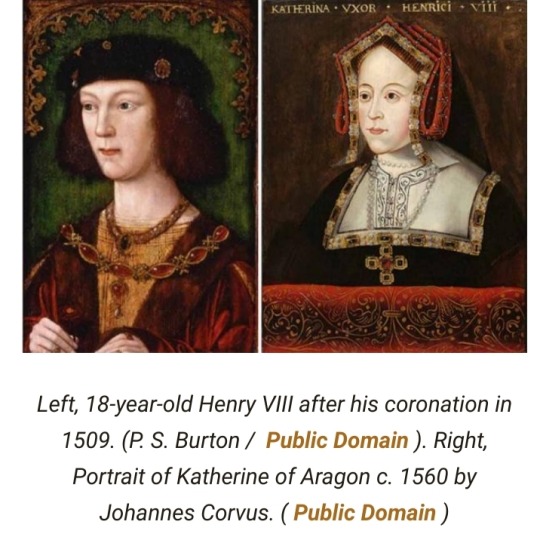
A Symbol of Henry’s First Love
Henry VIII was the king of England from 1509 until his death in 1547.
He was well known for his six marriages and his role in the English Reformation, which led to the Church of England breaking away from the authority of the Pope.
Katherine of Aragon was Henry's first wife and was a Spanish princess who was highly respected by the English people.
The couple were married for over 20 years, but their marriage was annulled by the Pope, leading to a long-standing political and religious crisis that ultimately resulted in England breaking away from the Roman Catholic Church .
The pendant, which is heart-shaped and attached to a 75-link gold chain via an enameled “hand,” is thought to date back to the early 16th century, between 1509 and 1533, with the most likely date being around 1521.
The front of the pendant features the red and white Tudor rose symbol, intertwined with a pomegranate bush, which were the symbols of Henry and Katherine.
The back of the pendant features the letters H and K, for Henry and Katherine, in Lombardic script, linked by ribbon and featuring the legend "TOVS + IORS".

According to experts, the pendant may have been produced quickly for a special event, such as a joust, and could have been used as a prize or worn by those participating.
Its design is similar to the horse bards used at a joust in Greenwich in 1521.
Perhaps this was a trinket from a joust in which Henry himself participated.
He was known as a skilled jouster. However, in 1536, he was torn from his horse and injured, knocked unconscious for 2 hours.
The location of this event was unknown until just 2 years ago, when it was revealed to be Greenwich Palace.
Showcasing British Antiquities
The pendant is being showcased by the British Museum to mark the launch of two annual reports, the Treasure Annual Report for 2020 and the Portable Antiquities Scheme Annual Report for 2021.
The Portable Antiquities Scheme, which is funded by the British Museum and the Department for Digital, Culture, Media, and Sport, records archaeological finds made by the public to advance knowledge and increase public interest in history.
The reports show that 45,581 archaeological finds were recorded in 2021, including 1,085 Treasure cases, with 96% of these discoveries made by metal detectorists.
The counties with the highest number of PAS finds in 2021 were Gloucestershire, Suffolk, and Lincolnshire, with significant numbers also recorded in other counties such as Buckinghamshire, Hampshire, Kent, and Wiltshire.
The discovery of the Henry VIII and Katherine of Aragon pendant highlights the significant contribution that everyday people, who enjoy metal detecting as a hobby, can make to the field of archaeology.
By recording these finds, they are helping to deepen our understanding of Britain's rich and fascinating past.
#King Henry VIII#Katherine of Aragon#British Museum#Portable Antiquities Scheme#Historic England#Warwickshire#Treasure Annual Report for 2020#Portable Antiquities Scheme Annual Report for 2021#Tudor dynasty#House of Tudor#archaeology#British Royal Family
104 notes
·
View notes
Text
Roman-era silver 'toilet spoon' discovered in Wales

A Roman-era silver "toilet spoon" discovered by a metal detectorist in the U.K. has been declared a "treasure" by experts.
Valentinas Avdejevas made the peculiar finding in 2020 while exploring Vale of Glamorgan, a county in Wales. He surrendered the metal artifact to the Portable Antiquities Scheme for Wales, a local authority that works directly with metal detectorists who have unearthed artifacts. The utensil is currently in the possession of Amgueddfa Cymru – Museum Wales, according to a statement.
The narrow silver spoon (also known as a Roman ligula) contains a shallow, circular bowl attached to a thin, bent handle and would have been used to scoop out cosmetics and perfume from long-necked bottles. Read more.
3K notes
·
View notes
Text

Discovery of Roman Buried Coins in Wales Declared Treasure
Two sets of coins found by metal detectors in Wales are actually Roman treasure, the Welsh Amgueddfa Cymru Museum announced in a news release.
The coins were found in Conwy, a small walled town in North Wales, in December 2018, the museum said. David Moss and Tom Taylor were using metal detectors when they found the first set of coins in a ceramic vessel. This hoard contained 2,733 coins, the museum said, including "silver denarii minted between 32 BC and AD 235," and antoniniani, or silver and copper-alloy coins, made between AD 215 and 270.
The second hoard contained 37 silver coins, minted between 32 BC and AD 221. Those coins were "scattered across a small area in the immediate vicinity of the larger hoard," according to the museum.
"We had only just started metal-detecting when we made these totally unexpected finds," said Moss in the release shared by the museum. "On the day of discovery … it was raining heavily, so I took a look at Tom and made my way across the field towards him to tell him to call it a day on the detecting, when all of a sudden, I accidentally clipped a deep object making a signal. It came as a huge surprise when I dug down and eventually revealed the top of the vessel that held the coins."
The men reported their finds to the Portable Antiquities Scheme in Wales. The coins were excavated and taken to the Amgueddfa Cymru Museum for "micro-excavation and identification" in the museum's conservation lab. Louise Mumford, the senior conservator of archaeology at the museum, said in the news release that the investigation found some of the coins in the large hoard had been "in bags made from extremely thin leather, traces of which remained." Mumford said the "surviving fragments" will "provide information about the type of leather used and how the bags were made" during that time period.
The coins were also scanned by a CT machine at the TWI Technology Center Wales. Ian Nicholson, a consultant engineer at the company, said that they used radiography to look at the coin hoard "without damaging it."

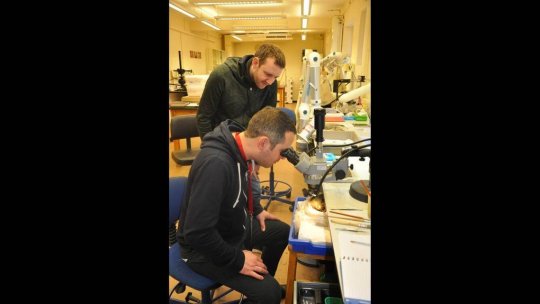
"We found the inspection challenge interesting and valuable when Amgueddfa Cymru — Museum Wales approached us — it was a nice change from inspecting aeroplane parts," Nicholson said. "Using our equipment, we were able to determine that there were coins at various locations in the bag. The coins were so densely packed in the centre of the pot that even our high radiation energies could not penetrate through the entire pot. Nevertheless, we could reveal some of the layout of the coins and confirm it wasn't only the top of the pot where coins had been cached."
The museum soon emptied the pot and found that the coins were mostly in chronological order, with the oldest coins "generally closer to the bottom" of the pot, while the newer coins were "found in the upper layers." The museum was able to estimate that the larger hoard was likely buried in 270 AD.
"The coins in this hoard seem to have been collected over a long period of time. Most appear to have been put in the pot during the reigns of Postumus (AD 260-269) and Victorinus (AD 269-271), but the two bags of silver coins seem to have been collected much earlier during the early decades of the third century AD," said Alastair Willis, the senior curator for Numismatics and the Welsh economy at the museum in the museum's news release.
Both sets of coins were found "close to the remains of a Roman building" that had been excavated in 2013. The building is believed to have been a temple, dating back to the third century, the museum said. The coins may have belonged to a soldier at a nearby fort, the museum suggested.
"The discovery of these hoards supports this suggestion," the museum said. "It is very likely that the hoards were deposited here because of the religious significance of the site, perhaps as votive offerings, or for safe keeping under the protection of the temple's deity.
By Kerry Been.
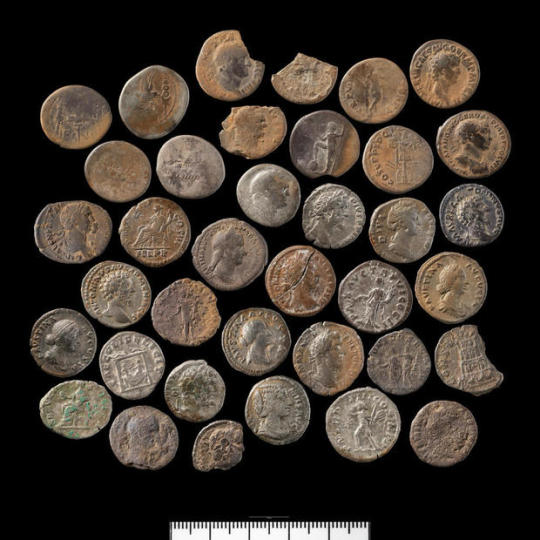
#Discovery of Roman Buried Coins in Wales Declared Treasure#coins#collectable coins#roman coins#metal detecting#ancient artifacts#archeology#archeolgst#history#history news#ancient history#ancient culture#ancient civilizations#roman history#roman empire#roman art
166 notes
·
View notes
Text

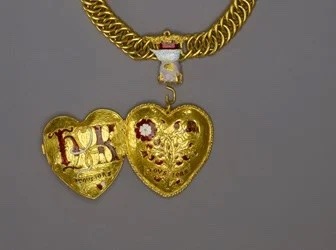
This heart-shaped pendant associated with Henry VIII and Katherine of Aragon was discovered by a metal-detectorist in Warwickshire and now is being unveiled to the public by the British Museum:
“The gold, heart-shaped pendant is attached to a 75-link gold chain via an enamelled ‘hand’.
The front of the pendant is decorated with a red and white Tudor rose motif entwined with a pomegranate bush, the symbols of Henry and Katherine. These stem from the same branch, which at its base has a tail, and sits above the inscription + TOVS + IORS - a pun on the French for ‘always’.
The back shows the letters H and K - for Henry and Katherine - in Lombardic script, linked by ribbon, again with the legend + TOVS + IORS.
Analysis dates the pendant as early 16th century, from 1509 – 1533 AD with a most likely date of around 1521.
It appears that the pendant was produced rapidly; it may have been used as a prize or worn by people participating in an event. The design of the pendant is like that used on horse bards at a joust in Greenwich in 1521.
It is being showcased by the British Museum to highlight the launch of two annual reports – the Treasure Annual Report for 2020 and the Portable Antiquities Scheme (PAS) Annual Report for 2021.”
source: (x)
771 notes
·
View notes
Text
The British Museum has unveiled astonishing discoveries in its 2022 Portable Antiquities Scheme Annual Report, proving once again that the UK is a treasure trove of archaeological wonders!
From the muddy banks of the Thames to the rolling fields of Staffordshire, remarkable artifacts continue to emerge, thanks to the dedication of mud larkers and metal detectorists alike.
30 notes
·
View notes
Photo






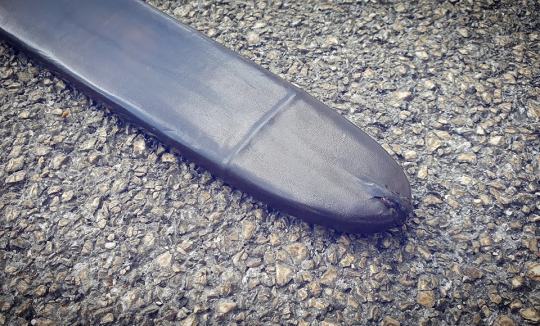
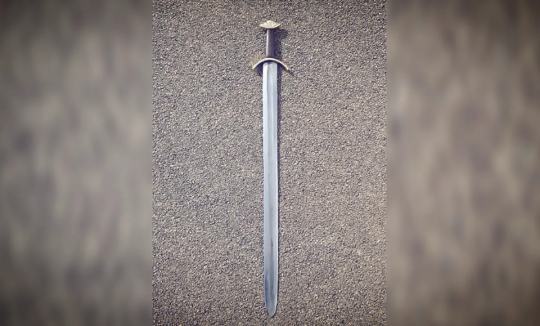

A Sword of Petersen type L.
Pattern-welded blade with a core of 3 rods of twisted 15N20 and 1075 steel (11 layers), and a forge-welded 1075 steel edge ; brass fittings, based on various finds from the Portable Antiquities Scheme.
The 5-lobed pommel is hollow, and the tang is peened though.
Grip is Bog Oak of at least 4 thousand years old, with a nice translucency under the sun thanks to its mineralisation.
The scabbard has a wooden core made of two slabs, hand-carved to shape, with an inside lining of 100% wool fabric ; this core is wrapped in linen (cloth and thread to form risers) and vegetable tanned leather, with a back stitch running to the front of the scabbard tip.
All glued with cheese (casein) glue.
Lining and outer leather are whip-stitched at the throat with natural-dyed silk thread.
The strap slide is carved from cow bone, and placed under the leather/linen, as fitting.
Historical examples of chapes seem to correspond to very specific finds and contexts, and it was therefore decided not to put one on this set, which is more looking towards the Xth century British Isles in terms of area of inspiration.
The suspension system is loosely based on the Ballateare find, though I chose not to make a lower ring/plate to allow for more versatility in adjusting the angle of the scabbard on the hip. Also, the decorated strap end was made after a find from York.
All straps are vegetable tanned leather, all fittings are brass.
The worst twist to historicity here, that I tried to conceal with questionable success for the sake of these photos (though the rest is highly debatable if one is keen to go down that rabbit hole) is a family crest carved and tooled on the outer leather between the strap slide and the mouth of the scabbard - customer's request, and in those matters the customer is, for once, King.
Overall length 866 mm. Blade is 731 mm long.
The sword alone weighs 945 g, and the point of balance is about 20 cm down from the cross
118 notes
·
View notes
Text

Incomplete silver penny bearing the crowned bust of Edmund I, King of the English (r. 939-946). Minted at an unknown location by one Ealmode; found in Norfolk. Photo credit: Suffolk County Council/Portable Antiquities Scheme.
#art#art history#Middle Ages#medieval#medieval art#early medieval#Anglo-Saxon#Anglo-Saxon art#English art#Edmund I#coins#numismatics#penny#metalwork#silverwork
125 notes
·
View notes
Text

'Seated North African Boy' Roman Bronze Figurine, Saffron Walden Area
The Roman Empire, like the Greek Empire before it, included parts of the Middle East and North Africa, and its population was diverse. This bronze figurine is believed to be a 2nd century CE copy of a Hellenistic (Greek) figure.
The hole in the top of the head suggests that it was part of a larger object, perhaps some household fitting or candelabra for the dining table.
This unusual find is one of many local objects brought to light by the Portable Antiquities Scheme, recording finds made by local metal detectorists and members of the public.
#roman#roman figurine#roman craft#roman art#roman empire#roman culture#romans#roman britain#roman living#roman metalwork#diversity#depiction#archaeology#relic#saffron walden#sculpture
46 notes
·
View notes
Text
P3Reload Content. What's in and out? My opinion.
Ignoring most of the controversy, here's what I think will be included and what won't with some evidence.
INCLUDED:
Elizabeth's Quests and dates ARE likely in the game. Elizabeth's quests and dates were not in the original release of Persona 3 but became a staple after FES. We're all highly aware of how important Elizabeth is to Makoto's story in the grand scheme of things, excluding her is highly unlikely.
Evidence: QUESTS can be seen in the main menu.
(UPDATE: Quests were in game but the dates and additional quests were not)

P3P Rescue Missions ARE likely in the game. These were not in the original release of Persona 3 or Persona 3 FES but was added in portable.
Evidence: The billboard can be seen in the mall and intractable on the map since it matches the other intractable map icons.


Aigis's social link is likely in the game. I have no evidence other than the fact she gets a major focus at the beginning of the trailer. Aigis did not have a social link in the original release of Persona 3, but was added into Persona 3 FES and continued into P3P
Walking Koromaru is likely still in the game. Yes surprise, walking Koromaru alone or with your teammates was not in the original release of Persona 3, but was continued in FES and P3P. My evidence for this is the fact that they will be adding character stories, not removing them. Atlus is Atlus, but I don't think they would remove the only way for Makoto to interact with Koromaru in a meaningful way in FES and P3P.
Taking your team out to see films during the Summer Film Festival is likely still in the game. Again, this was not originally included in the release of Persona 3, but was continued in FES and P3P. My evidence for this is basically the same as the previous point. They are adding onto existing content, the film festival is one of the few ways Makoto can interact with his team in FES and P3P.
The Surveillance footage is likely still in the game. Once more, this is a feature that wasn't in the original release of Persona 3, but was added in FES and continued into P3P. Though I hope they change some of them to be a little less weird and more on the funny side and I have no definitive evidence that it will be included, their removal seems highly unlikely.
(quick add) Weapon Melding will likely be in the game. The Antique shop in the mall was added in FES and can still be seen and intractable in the trailer. This was not in Persona 3 vanilla.
(UPDATE: This shop was in the main game but not weapon fusion)

MISC: The weapon shop includes accessories now and the old jewelry store is now a perfume shop, both were changes made in P3P and are not in FES or Persona 3 vanilla.


Now for what's NOT INCLUDED (and why):
Makoto using all weapons will probably not be included. This is a carry over from P3P to save on animation costs I believe. They didn't want to animate Kotone using all the weapons so Makoto was nerfed to using a 1 handed sword. It appears this is still the case since the weapon shop specifically says "For Yukari" on the bows. I believe the original trailer had no problem showing Makoto with different weapon types, which they did not show during the reveal trailer. As weird as this sounds to say, I actually think this is a point in the favor of FemC eventually being included. P3R has taken a LOT from P3P from a glance.
The Answer will likely not be included. While I think it's no that hard for them to reskin a dungeon with Aigis as the MC to create The Answer, that's not the problem I think. Based on the same statement that mentioned excluding FES and P3P content, they are adding a significant amount of new content and character stuff.
Pretend we will see everyone's flashbacks from The Answer in the main game in their new and improved social links or through new story moments in base P3R. Can you see how that might make half of The Answer kind of pointless?
I think including The Answer won't be as simple as redoing what we already have. They will have to reformat that to fit the NEW Persona 3 and all that entails. If this is how it's going to play out, I don't mind waiting for DLC, as long as I'm not paying $60-$70 bucks a second time. With the Unreal engine and all this new tech, they should be able to update their methods like Kingdom Hearts did. No more releases at full price, just offer DLC for half price.
Kotone will likely not be included. Again, maybe not for the reasons you think. I'm aware they initially had ideas of having a female protagonist from the getgo when they were creating the original Persona 3, but that's not how things panned out. They created Makoto Yuki and based most of the story around him.
Now they're redoing his story and adding and changing a bunch of stuff. The story of Persona 3 is no longer the same. Just like with The Answer, they can't just copy and paste Kotone's story from P3P into P3R.
Just like The Answer, I would prefer if they took their time perfecting P3R and then at a later date, repaint the game in her image... PROPERLY THIS TIME. This means Kotone can be treated right this time, with custom cutscenes and all. I know people love FemC and her characterization OUTSIDE of P3P, but I would like to see that characterization properly in game this time. If they take their time to adjust the story in a way that will suit her as well, then sure. They should take that time.
ULTIMATE CONCLUSION
I think The Answer and whatever it becomes should be a package deal with a Kotone DLC. Why? Because not only is it a lot of content, but the then The Answer will apply to Kotone as well.
This also means The Answer can be tailor fitted to include Makoto and Kotone depending on which protag you selected.
Or, they could go buck wild P3P style and find a way to mix the universes given Makoto and Kotone's fate (if you know you know).
So there's my thoughts. I needed to get it off my chest because all this doom and gloom was just... not it. Not saying you can't be disappointed obviously, but the writing was on the wall for a while now.
I also want a definitive version of the game, but with the leaks, it became clear weeks ago that that wouldn't be the case. No amount of copium or rage is going to change that, the game is likely 90% complete now and putting on the final touches for launch. Atlus wouldn't delay it either, not after what happened with Persona 5.
I believe with my full chest that P3R is the definitive version of the game. Or rather, I believe with my full chest that P3R will eventually have a DLC that includes Kotone and The Answer, at last bringing the Persona 3 "definitive" debate to an end.
I also wish people would be kinder to each other no matter which side you land on. There's no point in making fun of people saddened by the lack of Kotone. Like wtf, how would you feel if Makoto was suddenly excluded from everything??? Bad right? Just stop, things would be so much better if you chilled out and consoled your fellow P3 fans instead. Kotone fans are P3 fans too. Though I can say the same about Kotone fans pissed that she isn't there and turning their anger on Makoto. Makoto is a perfectly good protagonist. No, his social links weren't great, but that's partially why people wanted a remake in the first place. This isn't a 1 to 1 game and those poopy social links will probably be improved. The arguments are pointless.
Phew.
The statement "There is no FES or P3P content" has been proven false by me, a random internet user. P3R is clearly a combination of all the games, I think the only major missing things are The Answer and Kotone and that's it right now.
23 notes
·
View notes
Note
After seeing so many references in fics to Hob digging up caches of his own buried goods, I couldn't help but think about him trying to avoid running afoul of the Treasure Act - or worse (better?), some metal detectorist finding one of his hoards and reporting it to the Portable Antiquities Scheme themselves. Cue local council intrigue and museum subterfuge??? (My academic wheelhouse is art history mixed with cultural heritage, art theft, and archaeology, so this is the sort of thing that entertains me....) Anyway happy Friday and thanks for all the lovely writing. <3
Look, this is exactly the sort of absurd academic British humor that I likewise enjoy, so: YES, ABSOLUTELY. (I also find it amusing that you have to report possible Treasure Act-related findings to your friendly local coroner. Why the coroner? Presumably in case the guy who buried it 200 years ago actually buried it 20 years ago and is therefore Not Dead Yet, but still.)
Also, since the Portable Antiquities Scheme is headquartered at the British Museum, and in my headcanon/AITWW, Hob absolutely hates the British Museum, the comedic potential of him trying to steal his own stuff back from the place, while absolutely CURSING the would-be good citizen who duly reported it to them, is incredible. 10/10, do approve.
58 notes
·
View notes
Text
The long, thin piece of metal looked like a scaffolding pole when Trevor Penny saw it on the banks of an English river last November.
That would not have surprised Mr. Penny, who, while practicing his magnet fishing hobby, has unearthed household items, tools and other metal debris from the waterways near his Oxfordshire home. (Magnet fishing is pretty much what it sounds like: A strong magnet is attached to a rope, which is then tossed into a body of water.)
But his find that day was much more dramatic: a rusty Viking sword that had been there for more than 1,000 years.
The sword, found in the River Cherwell and identified by an archaeological group that tracks public finds, most likely dates to a period between 850 A.D. and 975 A.D. Mr. Penny said he handed it over to the Oxfordshire Museums Service this week, where it is expected to be put on display after restoration.
The discovery evokes a medieval era during which Vikings landed in the British Isles, raiding, plundering and trading their way through England and Scotland. Their incursions did not last, but their descendants still make up part of the British population today. In recent years, metal detectorists have helped unearth artifacts and treasure that had lain buried underground for centuries.
Detectorists in 2007 found a hoard of Viking treasure near North Yorkshire that experts called one of the most significant finds in Britain. Another hoard buried during that era was discovered in 2014 in Galloway, Scotland. But not everyone who stumbles across such discoveries has been immediately transparent: Two men in 2019 were convicted of theft and ordered to pay $1.5 million after they concealed the discovery of an Anglo Saxon hoard of treasure and sold some of the items.
When Mr. Penny, 52, realized what he had found, he contacted a local official responsible for identifying the public’s archaeological finds.
The discovery was “one further puzzle piece that can cast light on our shared heritage,” said that official, Edward Caswell, who documents Oxfordshire finds for the Portable Antiquities Scheme run by the British Museum. More analysis was needed, he cautioned, but experts confirmed that the sword fit with others from that era.
“We do find Viking weapons, including swords, deposited in rivers in England,” said Jane Kershaw, an associate professor of archaeology at the University of Oxford. About 70 such swords have been found in Britain, she said, and while Mr. Penny’s sword might have been dropped by accident, they were also often intentionally thrown in waterways as part of a ritual.
“Rivers were seen as gateways to other worlds, where gods and other creatures or spirits might live,” she said, adding that archaeologists interpreted such rituals as a Viking plea for protection or luck, perhaps in battle.
Many such weapons have been found in the north and east of the country, Dr. Kershaw said. She called the sword a “rare example” of viking activity in the area.
“It is outside the normal find zone for these weapons,” she said. “But the Vikings, they were active in that area. There is a lot that we don’t know about their activities.”
Hobbyists are increasingly making important discoveries, and Dr. Kershaw said it was critical that they report their finds. “It’s hugely valuable information,” she said. “As long as they are recording it, this is having archaeology that otherwise would be lost.”
But who owns artifacts that are found today can be a thorny issue, and can depend on whether they are classified as “treasure.”
According to the Treasure Act in Britain, metal objects more than 300 years old when found must be reported to the authorities within two weeks. Museums have the chance to claim objects, and finders and landowners may receive a reward, after an object is valued if it is deemed to be a treasure.
Mr. Penny found the sword on land owned by the Canal & River Trust, a charity that manages many of England’s inland waterways. The group has banned magnet fishing on its property, saying that it can be “dangerous” and that sharp objects could cause problems for visitors.
But the charity called the sword an “exciting find,” and it has agreed with Mr. Penny to transfer any potential ownership rights over the sword to a local museum.
Since he began magnet fishing three years ago, Mr. Penny has helped dredge up other discoveries, including old railway tools and a grenade suspected to be from World War II that had to be safely detonated by the authorities.
“It’s a great way to meet people,” said Mr. Penny, who often brings the metal he collects to a local scrapyard. “We get to talk to lots of people passing, who all thank us for cleaning the environment.”
He posts about his finds to a local magnet-fishing group, and so far has no plans to stop.
“I will keep fishing,” Mr. Penny said. “Hopefully with permission to do so.”
0 notes
Text
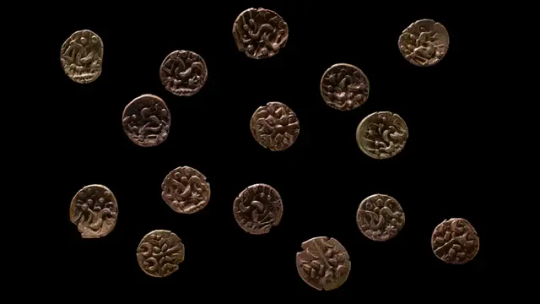
A 2,000-Year-old Iron Age Gold Treasure Found in Wales
Gold coins dating back more than 2,000 years have been found by metal detectorists in Wales, making them the first hoard of Iron Age gold coins to have been discovered in the country.
The 15 coins, which have been declared treasure, are known as staters. They were found the Welsh island of Anglesey, off the northwest coast of the country’s mainland.
Struck between 60 BC and 20 BC, the coins belonged to the Corieltavi tribe, who at the time inhabited the geographical area that is now England’s East Midlands, according to a National Museum Wales press release.
The precious metals were unearthed by three metal detectorists in a field between July 2021 and March 2022.
Lloyd Roberts, who said he has been a metal detectorist for more than 14 years, found the first coin.
“Finding a gold stater was always number one on my wish list,” he said in the release, adding: “That one coin alone would have made my year, but I went on to find another on my next signal.”
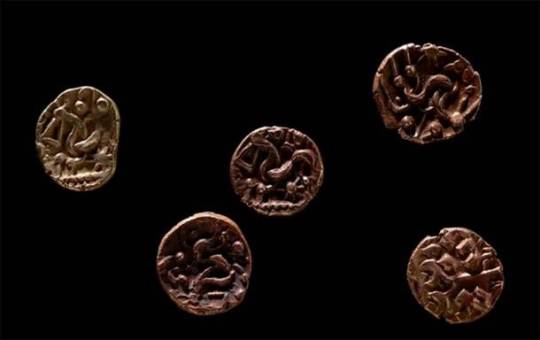
Roberts said that his friend, Peter Cockton, found the next three. They then contacted the Portable Antiquities Scheme, an organization which records such historical and archaeological finds.
Tim Watson, who said he only began metal detecting following encouragement from his father during lockdown, found the sixth.
“I rushed home to show my wife and we were both in awe of this coin, which was like nothing else I had found, immaculately preserved with such unusual stylised images,” Watson said in the release.
Watson said his enthusiasm led him to upgrade his metal detector and he found the remaining nine coins in the following weeks.
‘Rich archaeological landscape’
The gold coins’ elaborate design derives from those of Philip II, who ruled the ancient kingdom of Macedonia from 359 BC to 336 BC. The heads side of the coins shows the mythological deity Apollo’s wreath and hair, while the tails side shows a triangular-headed horse surrounded by symbols.
The coins were likely not used for everyday transactions, except potentially for some high-value purchases, according to the release. Instead, the staters are thought to have been used as gifts between the elites to secure alliances or show loyalty.
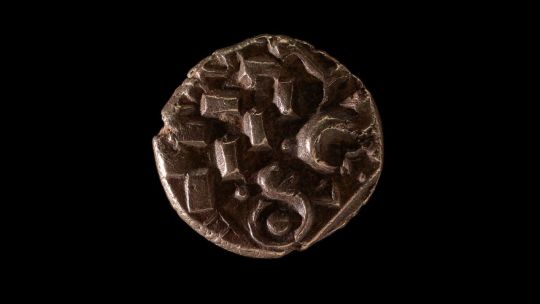
Another option is that the Corieltavi tribe used them to form part of an exchange for copper, which there were sources of in various parts of the island.
The staters could also have been used as “offerings to the gods” to fulfill a vow, according to National Museum Wales. Other archaeological finds from Anglesey, as well as Roman sources referring to the island that feature pagan priests, suggest the area was an important religious center at the time.
Gwynedd Archaeological Trust visited the site in September 2021 to see if there were any clues as to why the coins were buried there.
“This hoard is a fantastic example of the rich archaeological landscape that exists in North-West Wales,” said Sean Derby, Historic Environment Record archaeologist at Gwynedd Archaeological Trust. “While the immediate vicinity of the find did not yield any clues as to the find’s origin, the findspot lies in an area of known prehistoric and early Roman activity and helps increase our understanding of this region.”
Welsh museum Oriel Môn is looking to acquire the coins and put them on public display.
By Amarachi Orie.



#A 2000-Year-old Iron Age Gold Treasure Found in Wales#gold#gold coins#collectable coins#treasure#metal detecting#ancient artifacts#archeology#archeolgst#history#history news#ancient history#ancient culture#ancient civilizations#the Corieltavi tribe
162 notes
·
View notes
Text
Throughout history political badges have been used to show support for candidates during elections. These small pieces of memorabilia can be made from a variety of materials, including metals, cloth, and plastic. Some are quite rare and valuable, while others are more common. In this blog post, we will take a look at 10 different political pins and buttons from around the world. We will discuss the history behind each one and why they are significant.
At Sienna Pacific we offer all kind of Custom Lapel Pins, as political pins or election pins, in Hard and Soft Enamel, Screen Printed, Photo Etched or Cloissoné.... We also manufacture and supply badge patches for the police, law enforcement, military or any kind of logo patch for companies and individuals. We do not sell nor commercialize any of the products listed below but we can always manufacture similar designs and even with antique finishing touch or sandblasted.
10 Political badges and their historic context
George Washington's inaugural buttons at the Museum of American Revolution
1. 1789 George Washington's presidency inaugural buttons
These buttons were made to inaugurate George Washington's presidency. They are made of copper and have the phrase "Long Live the President" and the initials GW.
George Washington's 1789 campaign motto, "Long Live the President," may seem ironic at first glance. After all, this phrase typically references the monarchy in Europe, and the United States was just starting its journey as a democratic nation. However, a deeper dive into history reveals that the use of such a slogan was actually quite fitting for the time. The American Revolution had only just concluded, and much of Europe remained skeptical about the success of this new republic. Washington's campaign worked to reassure both American citizens and foreign rulers that democracy could prevail, and what better way to do so than to adapt traditional phrases of monarchic loyalty and apply them to the presidency? In essence, "Long Live the President" served as a proclamation of faith in the stability and longevity of America's experiment with self-government. (Source)
A complete Post Medieval, copper alloy cufflink or cuff button representing George Washington (AD 1732-1799), probably dating from AD 1775 -1799. Each fastener is oval and depicts a incised slightly right forward facing bust of George Washington in tricorne hat (cocked hat as it was referred to in the 18th century) with ' G WASHINGTON' below. The rear of the fasteners is undecorated. Each fastener has an integral looped shank and are joined by an oval link.Dimensions of individual fastener: length: 15.16mm; width: 11.86mm; total weight: 2.55g. Source: The Portable Antiquities Scheme, CC BY 2.0, via Wikimedia Commons
Campaign button for Abraham Lincoln, 1860. Portrait appears in tintype. Reverse side of button is a tintype of running mate Hannibal Hamlin. One of the earliest examples of photographic images on political buttons. Source: Mathew Benjamin Brady , Public domain, via Wikimedia Commons
2. 1860 Abraham Lincoln Presidential Campaign political ferrotype or tintype badge
In some places it is referred to as a badge but according to some other sources it is a medallion. However, it is considered one of the predecessors of the political pins and buttons.
Front: Abraham Lincoln
Back: Running mate Hannibal Hamlin
In the 1860 Presidential election, political badges were a common way for voters to show their support for a particular candidate. One such badge, depicting Abraham Lincoln, was made using a ferrotype or tintype process. This process involved capturing a photographic image onto a thin sheet of iron or tin. Today, these badges serve as interesting historical artifacts, offering insight into the political climate of the time and the individuals who wore them proudly in support of their preferred candidate. (Source)
William Jennings Bryan "No Cross of Gold No Crown of Thorns" Campaign Button. Source: Historical.ha
.com
3. 1896 "No Cross of Gold, no crown of thorns" political campaign pin
Among the top historic political badges we have to mention this simple but powerful one. This pin refers to William Jennings Bryan's famous 1896 speech. The mass production of political pins starts this year, thanks to a new industrial production process patented by Whitehead & Hoag.
The phrase "No cross of gold, no crown of thorns" was popularized by William Jennings Bryan during the 1896 presidential election. The cross and crown symbolized the conflict between the interests of those in the gold industry, represented by a gold cross, and farmers and laborers, represented by a crown of thorns.
This conflict revolved around monetary policy and the use of either gold or silver as a form of currency. Bryan, who supported the use of silver to improve economic conditions for farmers and laborers, famously proclaimed at the Democratic National Convention that he did not want a "cross of gold" imposed upon them. In other words, he did not want the power and interests of the wealthy gold industry to continue dominating over those in farming and labor industries. Ultimately, Bryan lost the election to William McKinley but his famous phrase remains an iconic rallying cry for economic equality. (Source)
McKinley-Theodore Roosevelt Campaign and Inaugural Items, ca. 1900-1901 Source: Cornell University Library Public Domain
4. 1904 Theodore Roosevelt Campaign Buttons
These political badges were used during Theodore Roosevelt's presidential campaign.
The 1904 presidential election saw Theodore Roosevelt, the Republican incumbent, running for his second term in office. Building on his successful first term, Roosevelt campaigned on a platform of continued progress and expansion. He promised to maintain the strong economy and urge Congress to pass important legislation such as the Pure Food and Drug Act. His campaign also focused on expanding American influence abroad, advocating for a more assertive foreign policy and even suggesting the building of a Panama Canal. Roosevelt's campaign was ultimately successful, as he won by a landslide with over 60% of the popular vote. His decisive victory cemented him as a popular and influential president in American history. (Source)
Campaign button from John F. Kennedy's 1960 presidential campaign. "There are no known U.S. copyright restrictions on this image." Source: John F. Kennedy 1960 presidential campaign, CC BY-SA 4.0, via Wikimedia Commons
John F. Kennedy presidential campaign button; Campaign buttons from the United States presidential election, 1960. Source: John F. Kennedy presidential campaign for 1960., CC BY-SA 4.0, via Wikimedia Commons
5. 1960 JF Kennedy campaign political badges
This button was used during John F. Kennedy's presidential campaign.
The 1960 presidential campaign of John F. Kennedy was marked by numerous challenges, including his relative youth and inexperience, his Roman Catholic faith, and allegations of financial misconduct. However, Kennedy was able to effectively use television as a medium to present himself as confident, articulate, and charismatic. His famous televised debates with opponent Richard Nixon showcased his quick thinking and ability to connect with the American people. Additionally, Kennedy's team utilized innovative campaign tactics such as featuring the handsome Kennedy family in advertisements and distributing buttons with Kennedy's catchy campaign slogan "Kennedy for President - The New Frontier." (Source)
Image of the front of an aluminium and plastic Chairman Mao badge with inscription "梅花欢喜漫天雪" ("the plum blossom is happy and the sky is full of snow" -- a line from a poem written by Chairman Mao in 1962), inscribed "敬祝毛主席万岁无疆" on back, diameter 5.9 cm. Mass produced badge issued throughout during the Cultural Revolution (1966-1971)
6. 1966 to 1971 Chairman Mao Badges - Cultural revolution:
These political badges were given out during the Chinese Cultu
ral Revolution. They feature a portrait of Chairman Mao Zedong in several different designs.
During China's Cultural Revolution, Chairman Mao badges were worn as a symbol of loyalty and devotion to communist leader Mao Zedong. These small pins featured the iconic portrait of Mao, often with phrases like "Long Live Chairman Mao" or "Serve the People." They were mandatory for all government officials and highly encouraged for citizens, with many wearing multiple badges at once to demonstrate their fervor. Even children as young as three or four years old wore them on their school uniforms. The badges reached peak popularity in the late 1960s, with an estimated nine billion produced during this time. Despite their initial widespread acceptance, the Cultural Revolution ultimately proved to be a destructive and tumultuous period in Chinese history, leading many to question the intense idolization of Mao symbolized by these ubiquitous badges. Today, they are often collected as historical artifacts from this turbulent era in Chinese history. (Source)
Soviet Badges collected in Russia during 1990. Source: Jim Linwood Flickr Attribution 2.0 Generic (CC BY 2.0)
7. Soviet Era Political Pins. URSS Pioneer pin with profile of Lenin. Property of the Harvard Kennedy School Library & Knowledge Services, Harvard University:
This pin belonged to a member of the Young Pioneer Organization, a communist youth group in the Soviet Union. It features a profile of Vladimir Lenin.
The Soviet Union's political pins were a way for individuals to publicly display their allegiance to the state, as well as their commitment to specific political parties or figures. This particular pin features a profile of Vladimir Lenin, founder of the Russian Communist Party and first leader of the Soviet Union. Possessing and wearing such a pin would have been seen as a demonstration of loyalty to the ideals and policies of Lenin and the Communist Party. These pins were often worn on clothing or attached to bags and other personal items, serving both as identification and propaganda tool for the Communist state. It serves as a physical reminder of life under Soviet rule, where individual expression was heavily controlled and party loyalty was prized above all else. Today, these pins serve as historical artifacts, providing insight into life in the Soviet Union during its time in power. (Source)
Peace movement protest badge, 'PEACE. PEACE PLEDGE UNION' button badge, white, red and green on black ground; lettering in white- "PEACE." above illustration of poppy plants with "PEACE PLEDGE UNION" below; white label on reverse- SUPPORT - NUCLEAR-FREE - NEW ZEALAND! - FOR INFO WRITE- - BOX 18541 - CH.CH. 9, NZ; pin fastening. Date: (1980s); 22 Apr 1999; eighties; 13 Apr 1999; Elizabeth II (1952 -)-House of Windsor-English reign. Source: Collection of Auckland Museum Tamaki Paenga Hira, 1999.30.22
8. Hippie Patches, Punk Patches, biker Patches are another kind of political badges from the 60s and 70s:
These patches were popular among hippies, punks, and bikers in the 1960s and 1970s. They featured a variety of designs, including peace symbols, skulls, and flowers.
In the 1960s and 70s, many countercultural movements sought ways to express themselves and differentiate themselves from mainstream society. One form of self expression was through clothing, including wearing embroidered patches. Hippie patches often featured flowers, peace symbols, and messages advocating for love and unity. Punk patches frequently displayed anti-establishment themes and aggressive graphics.
Biker patches were worn by motorcycle gangs as symbols of membership and rank within the group. These patches continue to be popular among individuals looking to reflect their personal values and interests through fashion choices. While some may dismiss them as mere accessories, these patches hold deep significance for those who choose to wear them. In a world where individualit
y can sometimes feel lost in conformity, wearing patches is one way for people to assert their unique identities.
9. 2008 "Yes We Can" Obama U.S. Presidential Election Campaign Buttons
These buttons were used during Barack Obama's presidential campaign. They feature the slogan "Yes We Can."
In 2008, Barack Obama's "Yes We Can" campaign slogan inspired millions of Americans to rally behind his presidential candidacy. The phrase tapped into the country's collective desire for change, rallying diverse communities to come together and strive for a better future. During the campaign, Obama utilized various media platforms such as social media, television ads, and public appearances to spread his message and connect with voters. Despite facing steep odds against a well-established political opponent, Obama ultimately won the election and became the first African American president in U.S. history. The "Yes We Can" campaign will forever be remembered as a defining moment in American politics and a symbol of hope for those who seek equal opportunities in this country.
10. Donald Trump 2016 Presidential Campaign Buttons
These buttons were used during Donald Trump's presidential campaign. They feature the slogans "Make America Great Again" and "Trump 2016."
The 2016 presidential election was filled with historic moments, and collectors have taken note. The Donald Trump campaign buttons from that year have become hot collectibles, with new listings popping up on eBay every day. These buttons feature the now-iconic slogans "Make America Great Again" and "Trump 2016." Whether you supported Trump's campaign or not, these buttons provide a glimpse into one of the most talked about elections in modern history.
While they may be nostalgic reminders of a landmark election for some, others see political badges as evidence of different times in human history, and how big movements, revolutionary ideas and leaders made use of them as a way of encoraging loyalty among their followers and spread their messages. Whatever the case, these buttons stand as part of history and make a notable addition to any political memorabilia collection.
The tradition of wearing or giving away patches to support political candidates continues in the 21st century. So, if you see a political pin or button that you like, make sure to pick it up! It might just be a valuable piece of history.
0 notes
Photo

Medieval copper alloy casket key dating late 12th - early 14th century. Found using XP Deus II Metal Detector Prog 1 💥 The key has a solid stem which tapers towards the end and projects beyond the ward. The bow is oval in shape with two internally projecting spikes. There is some decorative moulding comprising three ridges at the junction between the bow and the stem. At the other end, the ward or bit is rectangular in shape and is solid with no clefts removed.. Similar keys can be found illustrated in Read (2001: 72; no 552), Read suggests a date range of late 12th - early 14th century for these keys. Similar examples are also recorded on the Portable Antiquities Scheme database e.g. WAW-65A321 and LON-526043. #metaldetecting #xpfinds #xpdeusmetaldetecting #xpdeus2 #metaldetectingfindsuk #norfolkbuttonboy #coinage #fyp #foryou #hobby #photooftheday #picoftheday #treasurehunting #silver #history #searching #regton @xpmetaldetectors #sondeln @regtondetectors #hammeredcoin #metaldetectorist #instagood #instagram #instapic #justdetect @justdetect @capture._earth #metaldetectorist #treasurehunter @treasurehuntingmagazine @thesearchermag #dirtfishing #coinhunting #coin #WhatGetsYouOutdoors @outdoorchanneltv @THE_HUNTER.WORLD @creators https://www.instagram.com/p/CiZLfsGq-F0/?igshid=NGJjMDIxMWI=
#metaldetecting#xpfinds#xpdeusmetaldetecting#xpdeus2#metaldetectingfindsuk#norfolkbuttonboy#coinage#fyp#foryou#hobby#photooftheday#picoftheday#treasurehunting#silver#history#searching#regton#sondeln#hammeredcoin#metaldetectorist#instagood#instagram#instapic#justdetect#treasurehunter#dirtfishing#coinhunting#coin#whatgetsyououtdoors
0 notes
Text

Denarius of Julia Mamaea (180-235 CE). During the Severan dynasty, Julia was one of several women who enjoyed great prominence in the Imperial household (her aunt, Julia Domna, wife of Septimius Severus, was a major intellectual and cultural force who maintained her own salon during Septimius' reign). When Julia Mamaea's son Severus Alexander ascended to the throne following the assassination of his cousin Elagabalus, Julia became his chief advisor. Though Alexander was initially far more popular than Elagabalus, he made the mistake of alienating the army, and the Rhine legions killed both him and his mother during a mutiny in 235; this marked both the end of the Severan dynasty and the beginning of the fifty-year period of turmoil and civil conflict that would end only with the accession of Diocletian.
On the obverse, the bust of Julia Mamaea; on the reverse, the figure of Juno Conservatrix (Juno the Preserver). The goddess holds a patera (sacrificial dish) and is accompanied by a peacock, her sacred bird. The denarius was minted between 225 and 235 and was found in Essex, England, UK. Photo credit: The Portable Antiquities Scheme/ The Trustees of the British Museum.
#classics#tagamemnon#Ancient Rome#Roman Empire#ancient history#Roman history#Severan Dynasty#art#art history#ancient art#Roman art#Ancient Roman art#Roman Imperial art#Roman religion#Ancient Roman religion#religio Romana#coins#ancient coins#Roman coins#Ancient Roman coins#denarius#numismatics#ancient numismatics#metalwork#silver#silverwork#British Museum
49 notes
·
View notes
Text
The Look of a Cheval Mirror
When used in a decorative setup, mirrors can add dramatic flair and intricate designs. Furthermore, the reflective property of mirrors also works to enhance the light and dimensions of a room. When placed opposite a window or opening, a decorative mirror can, on top of being functional, reflect light and the brightness thus achieved can make the room look bigger.
There is a particular mirror that people have seen time and time again in peoples homes, in movies and TV programs and, of course, in furniture stores. However, while many can recognise the mirror by sight, they might not know the mirror by name. For those interested parties, the name of the mirror is a cheval mirror.
For those unfamiliar with a cheval mirror, this particular type of mirror is designed for portability and for angling on a mechanism designed for changing the angles of the mirror. (Cheval is the French word for ìhorseî and ìhorseî was the name the French gave to the mechanism) This ability for the mirror to be able to change its angles made the mirror immediately popular with people who were looking so a creative alternative to the traditional wall mounted mirror.
A cheval mirror has a huge plus over the traditional wall mounted mirror because the cheval mirror can be moved from one room to another with little effort. One need not remove nails or bolts and then have to refasten a mirror to a wall in another room. With this simplicity at its core, it is no surprise that the cheval remains a popular design of mirror that has remained popular for literally centuries. There are many of these mirrors available ñ new or used ñ that will appeal to consumers looking for a mirror that will blend into a domestic environment.
This is not to say that a wall mirror has no value. When it comes to comparing a wall mount mirror and a cheval mirror, it would be difficult to make the argument that one is better than the other. The main issue between them revolves around the fact that each has its own specific value and aesthetic quality and selecting one over the other will depend upon the specific needs of the individual.
A decorative mirror can also be in an antique style, and framed with large borders in gold, silver, or brass. These curvaceous and highly stylised mirrors add extra dimension and a sense of time to a decor. Other mirrors can have borders of mosaic, chintz, leather, or other customised detail for a room's scheme. Traditional mirrors framed in solid wood, and contemporary mirrors with their straight, fuss-free lines and melt-in-the-background designs, can also be integrated into any decorative scheme. Frameless beveled mirrors work well in any room. Shutters are also an innovative way of framing mirrors, adding detail and colour.
1 note
·
View note